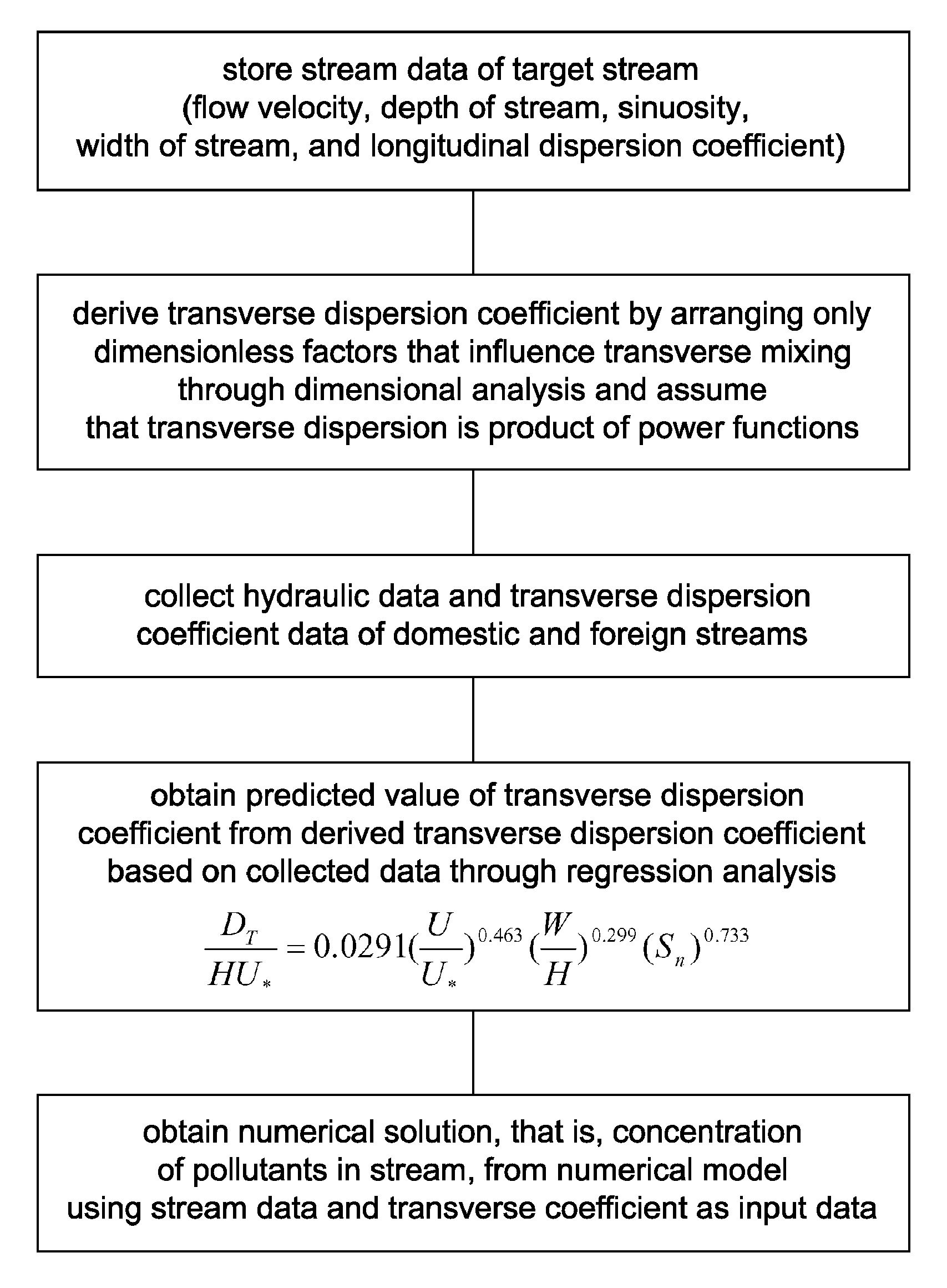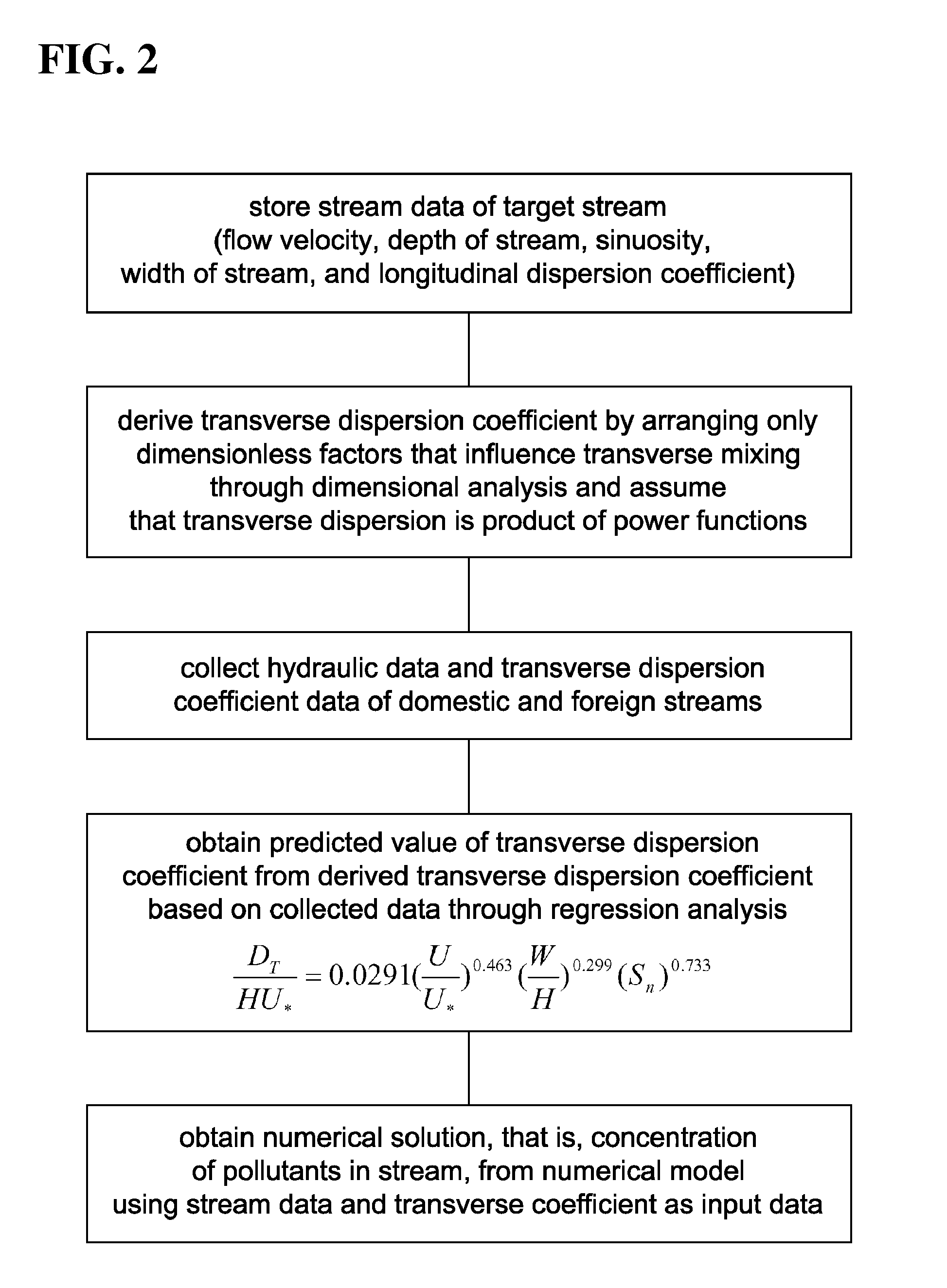Method of analyzing behavior of pollutants through prediction of transverse dispersion coefficient using basic hydraulic data in stream
a technology of transverse dispersion coefficient and basic hydraulic data, which is applied in the direction of chemical methods analysis, hydraulic models, instruments, etc., can solve the problems of complex process of transport and dispersion of pollutants and many errors
- Summary
- Abstract
- Description
- Claims
- Application Information
AI Technical Summary
Benefits of technology
Problems solved by technology
Method used
Image
Examples
Embodiment Construction
[0015]Reference now should be made to the drawings, in which the same reference numerals are used throughout the different drawings to designate the same or similar components.
[0016]In the present invention, when, in order to develop a new empirical equation for predicting a transverse dispersion coefficient, only dimensionless factors, which considerably influence transverse mixing in natural streams in dimensional analysis, are arranged and the transverse dispersion coefficient is then derived therefrom, the following Equation 1 is obtained:
DTHU*=f(Sn,UU*,WH)(1)
where DT is the transverse dispersion coefficient, H is the average depth of water, U* is the shear flow velocity, f is an arbitrary function, Sn is the sinuosity, U is the average flow velocity in a flow direction, and W is the width of a stream.
[0017]Thereafter, in order to develop the empirical equation through regression analysis, it is assumed that the Equation 1 is a product of power functions, as shown in the followi...
PUM
 Login to View More
Login to View More Abstract
Description
Claims
Application Information
 Login to View More
Login to View More - R&D
- Intellectual Property
- Life Sciences
- Materials
- Tech Scout
- Unparalleled Data Quality
- Higher Quality Content
- 60% Fewer Hallucinations
Browse by: Latest US Patents, China's latest patents, Technical Efficacy Thesaurus, Application Domain, Technology Topic, Popular Technical Reports.
© 2025 PatSnap. All rights reserved.Legal|Privacy policy|Modern Slavery Act Transparency Statement|Sitemap|About US| Contact US: help@patsnap.com



